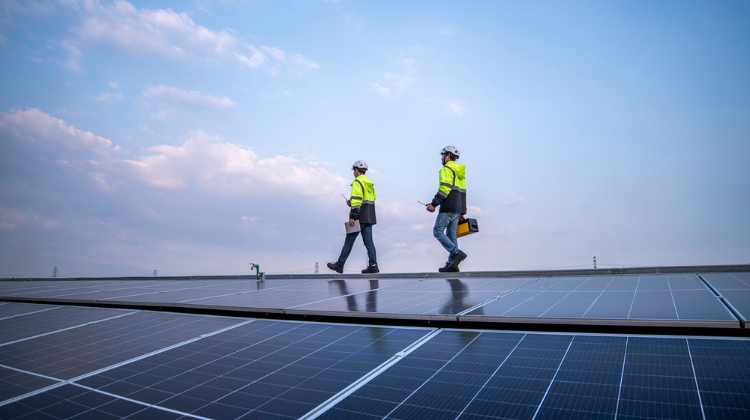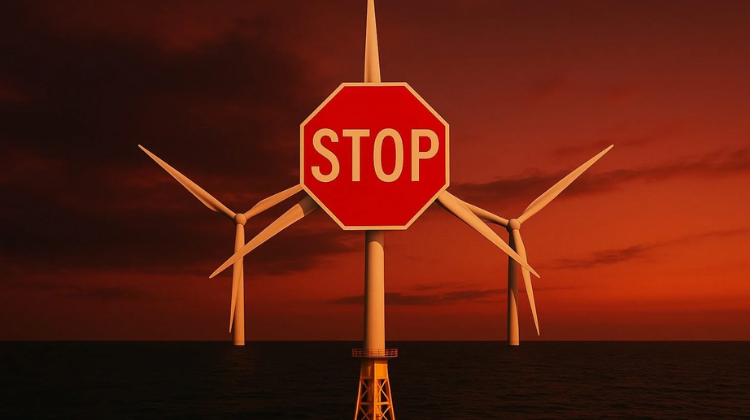Data from the first half of 2025 confirms the trend: self-consumption has now posted three consecutive years of contraction in installed capacity. Installed capacity during the first six months stood at 611 MW, 14.6% lower than in the same period of 2024.
The decline was concentrated in the industrial segment (-22.9%), whereas residential installations grew and battery storage soared, driven by the April blackout, lower surplus prices, and the need for supply security.
Third Consecutive Drop, Dragged Down by the Industrial Market
During the first half of the year, self-consumption capacity fell by over 14%. The main reason lies in the poor performance of the industrial market, which still accounts for the lion’s share of installed capacity: around 70% corresponded to companies and industries, yet industrial self-consumption capacity dropped by 23%.
Large intraday energy price spreads — with sharp differences between minimum and maximum prices on daily markets — together with saturated distribution grids, continue to undermine the profitability of industrial self-consumption.
Much of the problem stems from a grid that hampers the export of surpluses, effectively forcing companies to implement zero-export systems. In 2024, 19% of generation went unexported for this reason, representing the equivalent of €88 million worth of wasted renewable electricity.
“In an era of great geopolitical uncertainty, especially in energy markets, we cannot allow the lack of investment in grids and storage to end up undermining the competitiveness of our industry,” said Jon Macías, President of APPA Autoconsumo.
April Blackout as a Turning Point: Security and Back-Up for Households
The 28 April blackout, along with lower surplus prices, acted as a trigger for the domestic segment: residential self-consumption rose by 11.6%, with many new installations already designed with back-up (island mode) to guarantee supply in case of future grid failures.
At the same time, storage experienced an unprecedented leap: 146 MWh of batteries were installed in just six months — nearly matching all of 2024 — representing growth of 88%. Many of these installations were retrofits, adding batteries to existing systems.
“The residential market is particularly sensitive to changes, whereas the industrial market is more rational. The April blackout marked a turning point for citizens, who are now seeking supply security, including by adding batteries to existing systems,” explained Jon Macías.
Distributed Storage: Electrification and an Industrial Lifeline
Distributed storage is consolidating its role as a lever to electrify demand and a lifeline for industry in the current context of grid saturation.
For industry, self-consumption with storage has become not only the only viable route to obtain additional capacity — given current grid congestion and long waiting times for new connections — but also a means of providing greater flexibility to electrify production processes, improve business competitiveness, and even generate additional revenues by offering flexibility services to the grid operator.
To unlock this potential, specific regulation is needed to incentivise distributed storage, a key element in achieving demand electrification and ensuring a safer, more efficient system.
Interestingly, and as a result of the April blackout, the relative penetration of storage (batteries relative to installed capacity) was higher in the residential segment (58 MWh over 193 MW, 30%) than in industry (88 MWh over 418 MW, 21%).
Capacity Maps: Saturated Demand and Blocked Generation
Last week, capacity maps for firm demand access to distribution networks were published for the first time. These documents, prepared by distribution companies and submitted to the CNMC, reveal that more than 83% of nodes are already saturated, preventing new demand connections.
This problem is compounded by the long-standing saturation of generation access, which has been unresolved for years and prevents numerous self-consumption facilities — especially commercial and industrial ones — from injecting surpluses into the grid. Each year millions of euros are lost (€88m in 2024) in missed opportunities to export energy, reducing the sector’s competitiveness.
Urgent Measures Demanded by the Sector
Faced with this scenario, the sector is calling for a package of urgent measures, not necessarily based on direct subsidies, to unblock the development of self-consumption:
-
Tax incentives on Corporate Tax, Property Tax (IBI), and Personal Income Tax (IRPF), which would encourage investment in self-consumption.
-
Effective application of the 10% capacity reserve in transmission and distribution nodes for self-consumption, which is not currently being enforced.
-
Update of Royal Decree 244/2019, reinstating measures already envisaged in RDL 7/2025 but not implemented: extending the shared installation radius from 500 metres to 5 km, creating the figure of a self-consumption manager, and extending eligibility to other renewable technologies (wind, mini-hydro, biomass cogeneration…).
-
Urgent reinforcement of distribution grids, an essential condition for self-consumption to reach its potential and contribute to industrial competitiveness.
-
Specific regulation for distributed storage, key to encouraging its roll-out and achieving demand electrification, more stable surplus prices, and better integration into the power system.
-
Operational and transparent National Self-Consumption Register, to provide reliable data on installed capacity and facilitate public policy planning and investment decisions.
A Wake-Up Call for 2030 Targets
If 2023 marked the first clear deviation from the 2030 trajectory, the 2025 contraction is a red flag. Without reinforced grids, a complete regulatory framework for distributed storage, favourable tax treatment, and reliable data, self-consumption — the most inclusive and democratic of renewable technologies — risks falling short of the NECP 2030 targets.
“Self-consumption is key to supply security, to reducing household bills, and to maintaining industrial competitiveness. We need immediate measures to unblock its development,” concluded Jon Macías.






























